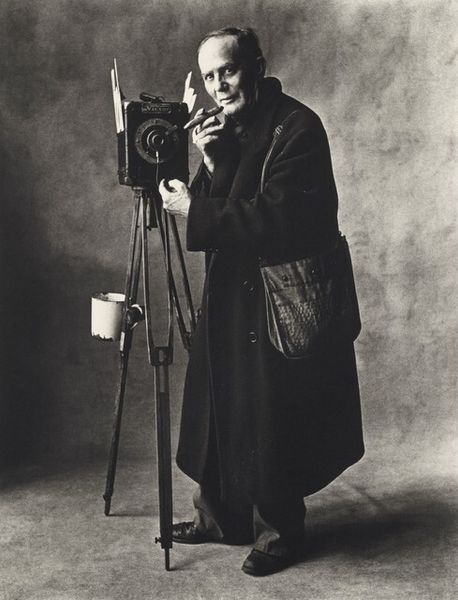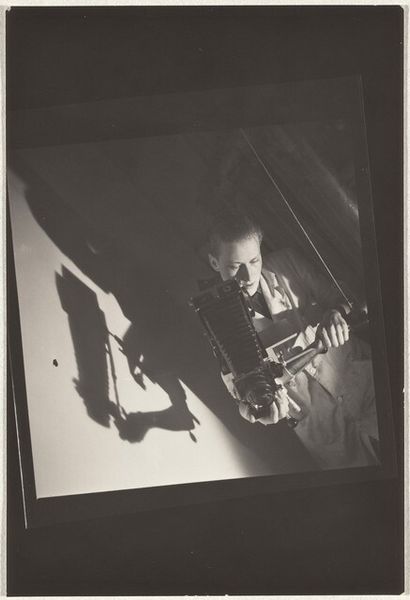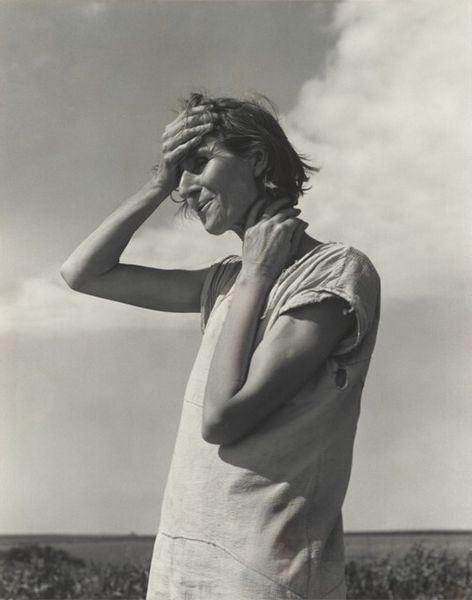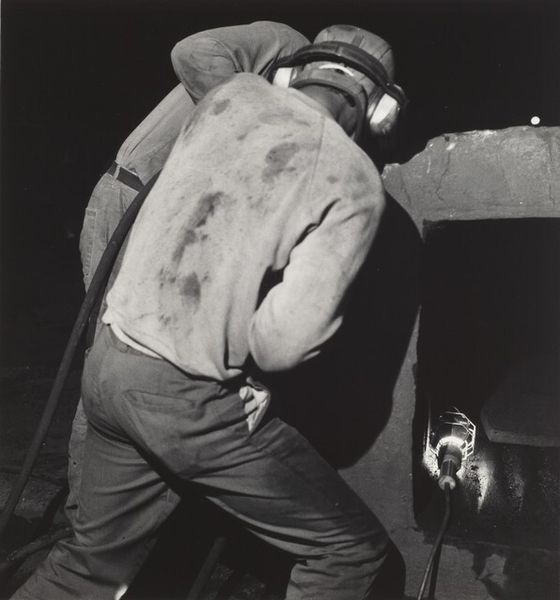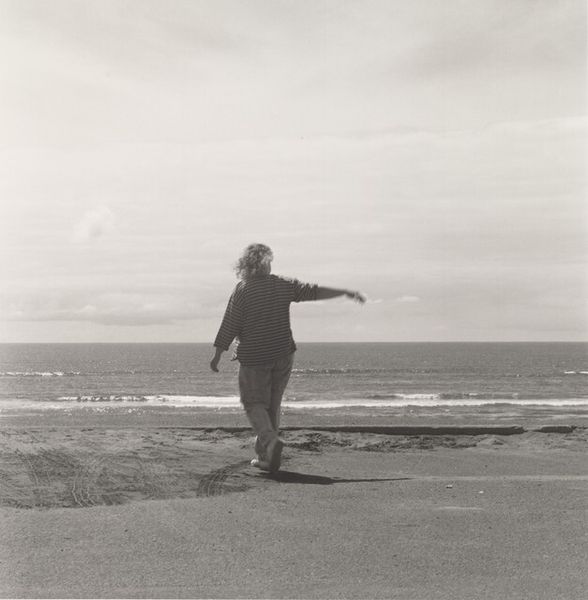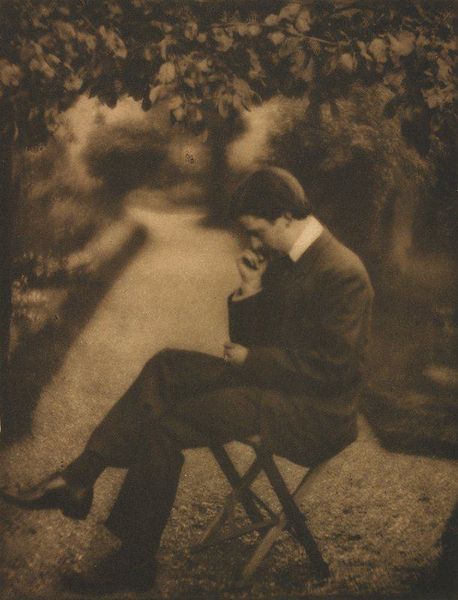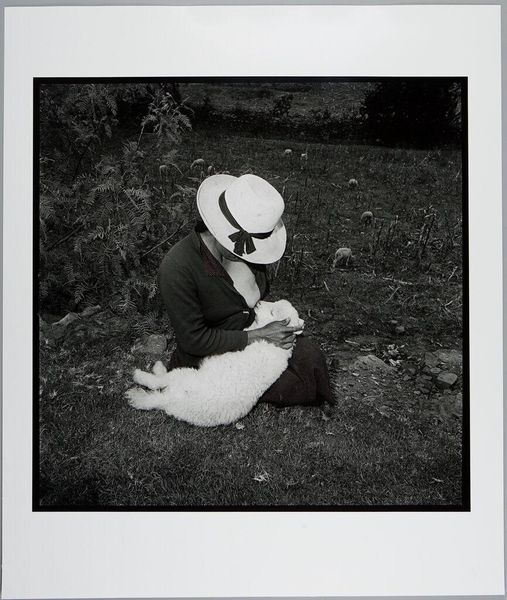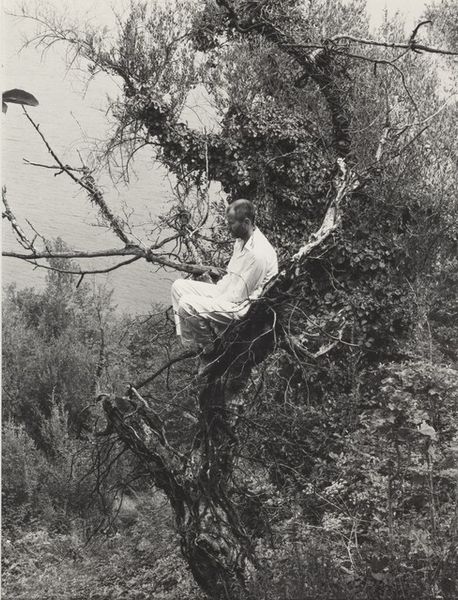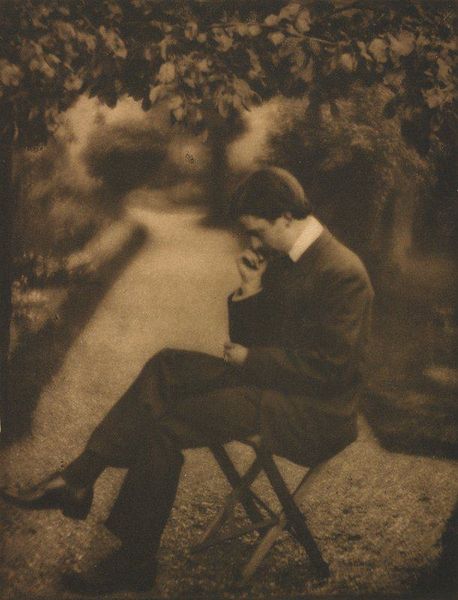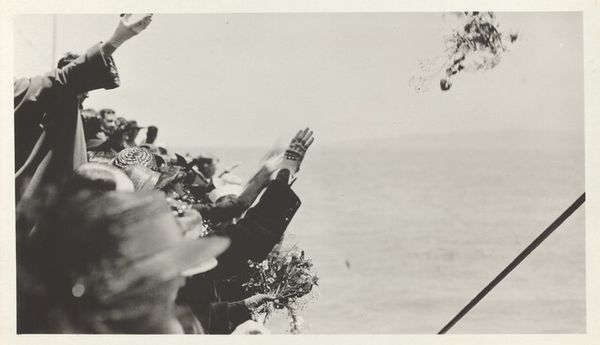
photography, gelatin-silver-print
#
portrait
#
pictorialism
#
black and white format
#
archive photography
#
photography
#
historical photography
#
black and white
#
gelatin-silver-print
#
monochrome photography
#
modernism
#
monochrome
Dimensions: image/sheet: 11.9 × 9.3 cm (4 11/16 × 3 11/16 in.)
Copyright: National Gallery of Art: CC0 1.0
Editor: We’re looking at “Alfred Stieglitz, Lake George, New York,” a photograph from 1929 by Paul Strand. It’s a gelatin silver print. It feels like an intimate moment, capturing Stieglitz totally absorbed in his work. What do you see in this piece beyond the technical skill? Curator: I see Strand capturing not just Stieglitz the man, but Stieglitz the institution. Consider the historical context: Stieglitz championed photography as fine art. This image, presented publicly, reinforces that vision. The sheer size and complexity of his camera, emphasized by Strand's composition, elevates the photographic process, suggesting artistry. Does this affect how you perceive the work now? Editor: Absolutely. The image is doing more than just documenting Stieglitz; it's almost monumentalizing him and his craft. But, does idealizing the equipment not unintentionally create distance, or even exclusivity, for potential photographers? Curator: That's a very astute observation. You're hitting on the power dynamics inherent in art and its presentation. Strand, consciously or unconsciously, may be both honoring Stieglitz and reinforcing a certain hierarchy within the art world itself. What do you make of the setting itself being ‘Lake George’, given the significance of place and belonging within art history? Editor: Interesting! That brings up questions about access and ownership – who gets to define "American" art, and whose landscapes are valued? It highlights how seemingly straightforward depictions are embedded with social and political implications. I hadn’t considered the impact of art and social messaging in a photograph this way. Curator: Exactly! Seeing art within its broader context illuminates the power of imagery and the stories museums tell.
Comments
No comments
Be the first to comment and join the conversation on the ultimate creative platform.
